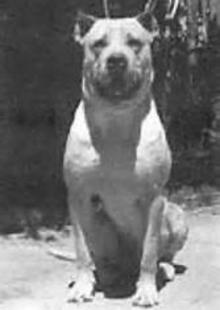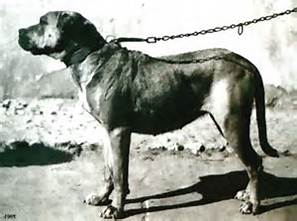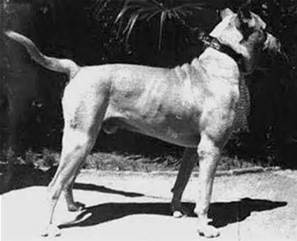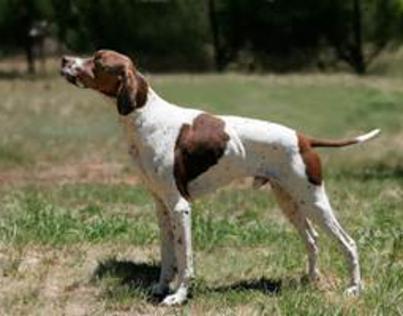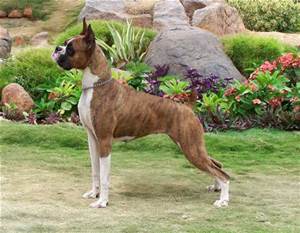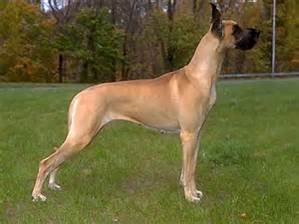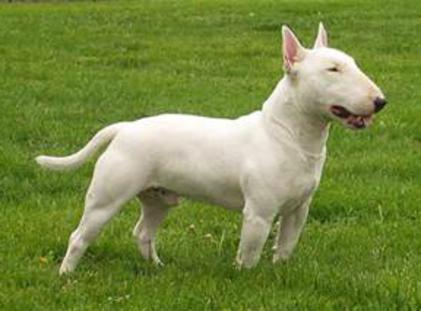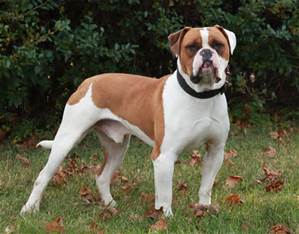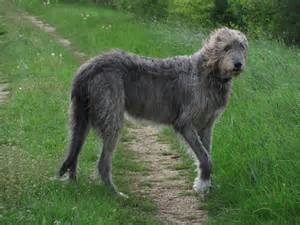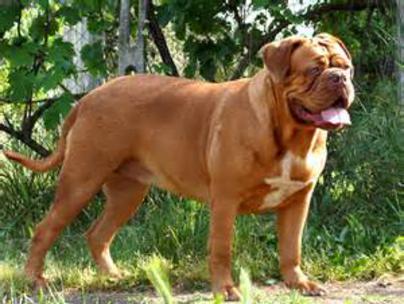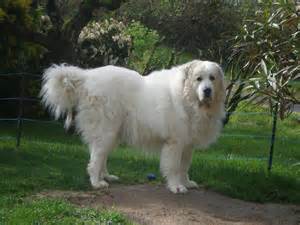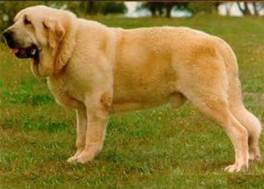Yo Amor Dogos
Open Mon - Sat
10 AM - 9 PM
Home 417-435-2679
Text 479-366-0353
Information
The Dogo Argentino is a large white muscular dog that was breed for big game hunting in Argentina. The Dogo was breed from the now extinct Cordoba Fighting Dog along with a wide variety of other dogs starting in 1928 by Antonio Nores Martinez who was eighteen and his young brother Agustin seventeen. Antonio wanted to produce a dog that would be a great hunter, exhibit a willingness to protect its human companions, have steadfast bravery and be great with children.
The brothers started off with 10 Cordoba females and brought in the first contributing males. They would breed them until they got the desired characteristics they were seeking and than add a new breed. At one point in the program they had over 30 breeding females to take care of and feed, their parents, friends and townsfolks all helped out, if not for their help there would have been no way that these two young men, who were still in school could have ever continued. Antonio who became a surgeon wrote the first breed standard for the Dogo Argentino using his medical knowledge to refine and improve the breed.
The Now Extinct Cordoba Fighting Dog.
The dogs that where used to create the Dogo Argentino were:
The Cordoba Fighting Dog
The Pointer for their keen sense of smell
The Boxer for its energy, liveliness and gentleness
The Great Dane for its size
The Bull Terrier for their fearlessness
The Bulldog for its boldness and broad chest
The Irish Wolfhound for its Hunting Instincts
The Dogue de Bordeaux for its powerful jaws
The Great Pyrenees for its white coat
The Spanish Mastiff for its power
The Dogo Argentino is the realization of a dream that began over 85 years ago. The creation of this dog was a 50 year labor of love, that Antonio never got to see to fruition, he was murdered on a bore hunting trip by a man who wanted to rob him. At that point his brother Agustin took over full time on the project bringing it back from devastation after his brothers death and moving the headquarters for the breed from Cordoba to Esquel, in southern Argentina. Agustin the ambassador to Canada used his diplomatic ties to spread the Dogo worldwide. The Dogo Argentino is everything and more that Martinezs brothers set them out to be.
"I still remember as if it were yesterday... the day when my brother Antonio told me for the first time his idea of creating a new breed of dog for big game, for which he was going to take advantage of the extraordinary braveness of the Fighting Dog of Cordoba. Mixing them with other breeds which would give them height, a good sense of smell, speed, hunting instinct and, more than anything else deprive them of that fighting eagerness against other dogs, which made them useless for pack hunting. A mix that would turn them into sociable dogs, capable of living in freedom, in families and on estates, keeping the great courage of the primitive breed, but applied to a useful and noble end; sport hunting and vermin control." - Agustin Nores Martinez, History Of The Dogo Argentino
In 1985 the (DACA) The Dogo Argentino Club of America was founded. It was the first Dogo Argentino organized club in North America. The Club is dedicated to keeping the abilities of the Dogo Argentino intact. "There simply is no reason for the Dogo Argentino now or in the future to be divided into two types. A "field" Dogo and a "show" Dogo are one and the same, they were created to be that way, and our breeders are determined to keep them that way. Perhaps our feelings on the matter are best described in the opening paragraph of our standard which first appeared in print in 1985".
The Dogo Argentino is an endurance hound much like his Irish Wolfhound ancestor. He is expected to track the wild boar across vast pampas, corner the animal and attack and hold it for the hunters. He is capable of dazzling bursts of speed for short distances, but his forte is covering long distances at a gallop (hence the arched loins to give impetus at the gallop). Having cornered the boar, he must have enough strength in reserve to attack and hold a wild boar weighing up to 400 pounds. In a traditional boar hunt the hunter will jump on the boar and kill it with a knife thrust to the heart while the Dogos are locked on with a death grip.
In A Brief History of the Argentinean Bulldog, by Agustin Nores Martinez, as translated from the original Argentine:
"I feel as a conscience imperative to make absolutely clear, which is the bulldog's background, the breeds that took part, what is what we intended to do, and which are the requirements or conditions that a bulldog must meet to be a typical example of the breed. This present extension, is a ratification of what was written in my first book. The fears I point to in the prologue to the four editions are confirmed a lot of times, when we see young people who ten years ago had never seen a bulldog, taking the part of "judges" in exhibitions, and who seemed to dream with "an own bulldog" awarding specimens which are far away indeed from what a good bulldog must be, as my brother Antonio and I intended in fifty long years of work and achievements.
To the enthusiasts and honest judges, who really want to know what the bulldog must be like is dedicated this knew (sic) book containing the objective history, step by step about how the bulldog was achieved and the extensive glossary of the standard that I make in chapter XV of this book. To the others, those who mix the bulldog with the Bullterrier to make them of lower height and weight, fighters against their own kind is not this book addressed, but a piece of advice: To devote themselves to the breeding of the Bullterrier in any of it's two varieties - White and Color Bullterrier, or the Staffordterrier (sic) - breeds which were created for fights, really noble animals, by the way, of extraordinary courage to fight against on another and with those dogs, let their low instincts loose if that is what they want, but, for God's sake!, do not spoil a breed which was made, after great sacrifices to be useful for mankind.
The Dogo Argentino took over 50 years of the Martinez brothers lives to produce. Breeders need to take a close look at that kind of devotion and hold themselves to the same kind of standards when breeding these magnificent animals. The goal of all breeder should be to make the breed the best that it can be.
Many US breeders have forgot the true purpose of the breed and onlt breed dogs for marketability. We as breeders need to preserve the true nature of these dogs, so that the Martinez brothers dream will not be lost on vanity. Breeder should always remember this when breeding and strive for the creation of the perfect Dogo.
Appearance
The male is usually about 24 to 25 inches (61-63 cm) high; while the female is about 23 to 24 inches (59-61 cm). An adult Dogo weighs between 80 – 100 lbs.
Dogos have very muscular legs and paws with short, well-jointed toes. The head is powerful with a broad, slightly domed skull and a powerful muzzle. The jaws are strong with large teeth, which normally meet in a scissors bite. A Dogos eyes are dark or light brown and the nose is usually black. Many owners/breeders choose to crop their Dogo´s ears, while others prefer them to hang naturally.
The Dogo tolerates hot climates, but does not react well to cold, you need to put a jacket on them in the winter time. The breed does best in a big yard, but will do well in an apartment if exercised on a regular basis.
The Big Hearted Dogo
Dogos are known for their outgoing eager-to-please nature and their affection for people. Generally, Dogo Argentinos are easy to train, but they need a firm and gentle trainer. The breed can be aggressive with other animals, but are usually good with other pets if raised around them.
On the whole, a Dogo is a sweet, yet powerful dog filled with love, energy and playfulness. But because of its enormous strength (and size), it is also a dog that needs adequate training in order to become a wonderful family companion, which means that a Dogo might not be the best choice for a novice dog owner.
Dogo Argentinos are becoming increasingly popular in the United States, and are becoming extremely desirable to a large segment of the population. The popularity of this breed is increasing as its hog hunting abilities are becoming better known, and as the popularity of American Pit Bull Terriers and Molosser-type dogs in general is on the rise. Many new breeders are producing Dogo Argentino puppies, and there is some fear among older fanciers that damage to the breed could result. In America, Dogo Argentinos are used as hunting dogs specializing in hog, personal protection animals, schutzhund competitors, competitors in all types of canine activities, and as companion animals. Although the breed has no connection to the American Pit Bull Terrier whatsoever other than some distant Bull Terrier ancestry, it is commonly associated with that breed due to looks alone. Unfortunately, the American Pit Bull Terrier has earned a reputation for viciousness (which is largely unfair and undeserved) and this reputation has carried over to the Dogo Argentino as well, even though the breed is not known for viciousness at all and was specifically developed to be gentle and tolerant of both people and other dogs. The Dogo Argentino is now banned or has restrictions placed on its ownership in a number of American municipalities and counties. The breed has also been outlawed or restricted in a number of countries, including the United Kingdom, Australia, New Zeeland, Norway, Denmark, Iceland, Portugal, Romania, Singapore, and the Ukraine. Many of these bans are highly criticized, as the breed is not known to be human aggressive and is almost never used for dog fighting because it lacks the dog aggression to do so.

